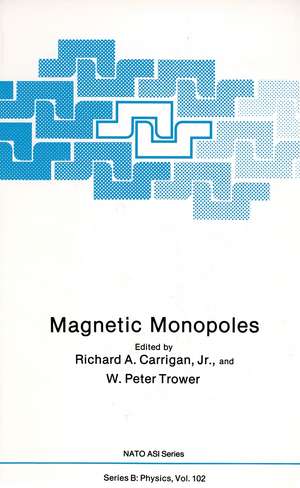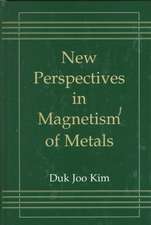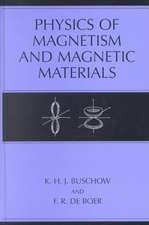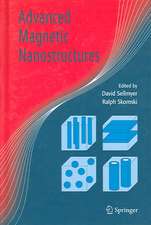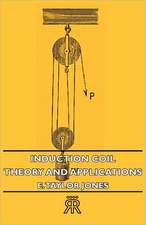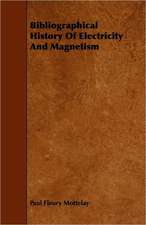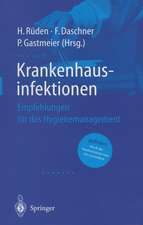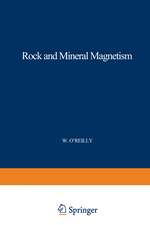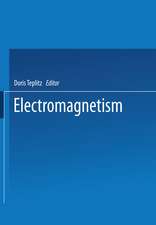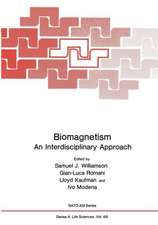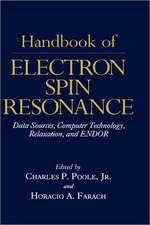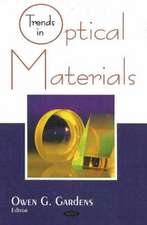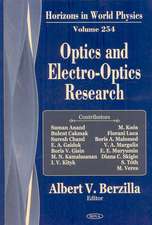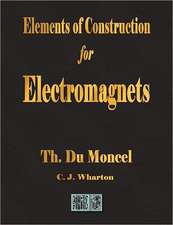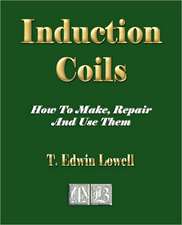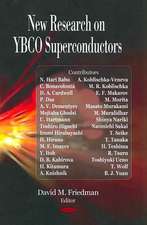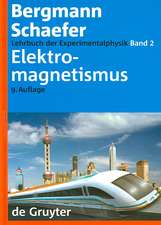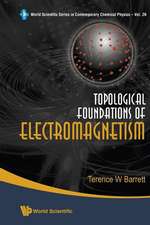Magnetic Monopoles: NATO Science Series B:, cartea 102
Editat de Richard A. Carrigan, W. Peter Troweren Limba Engleză Paperback – 12 dec 2012
Din seria NATO Science Series B:
- 5%
 Preț: 375.70 lei
Preț: 375.70 lei - 5%
 Preț: 369.29 lei
Preț: 369.29 lei - 5%
 Preț: 720.84 lei
Preț: 720.84 lei - 18%
 Preț: 1406.03 lei
Preț: 1406.03 lei - 5%
 Preț: 373.33 lei
Preț: 373.33 lei - 5%
 Preț: 723.78 lei
Preț: 723.78 lei -
 Preț: 391.79 lei
Preț: 391.79 lei - 5%
 Preț: 1445.00 lei
Preț: 1445.00 lei - 5%
 Preț: 380.61 lei
Preț: 380.61 lei - 5%
 Preț: 1103.75 lei
Preț: 1103.75 lei - 5%
 Preț: 711.72 lei
Preț: 711.72 lei - 5%
 Preț: 1414.08 lei
Preț: 1414.08 lei - 18%
 Preț: 957.44 lei
Preț: 957.44 lei - 5%
 Preț: 723.21 lei
Preț: 723.21 lei - 5%
 Preț: 727.44 lei
Preț: 727.44 lei - 5%
 Preț: 1117.46 lei
Preț: 1117.46 lei - 5%
 Preț: 1429.80 lei
Preț: 1429.80 lei - 5%
 Preț: 366.56 lei
Preț: 366.56 lei - 5%
 Preț: 1116.21 lei
Preț: 1116.21 lei - 5%
 Preț: 1106.33 lei
Preț: 1106.33 lei - 5%
 Preț: 1107.77 lei
Preț: 1107.77 lei - 5%
 Preț: 1098.48 lei
Preț: 1098.48 lei - 5%
 Preț: 715.71 lei
Preț: 715.71 lei - 5%
 Preț: 1428.71 lei
Preț: 1428.71 lei - 5%
 Preț: 2004.54 lei
Preț: 2004.54 lei - 5%
 Preț: 724.70 lei
Preț: 724.70 lei - 5%
 Preț: 1438.38 lei
Preț: 1438.38 lei - 5%
 Preț: 1109.23 lei
Preț: 1109.23 lei - 5%
 Preț: 1414.64 lei
Preț: 1414.64 lei - 5%
 Preț: 1291.01 lei
Preț: 1291.01 lei - 5%
 Preț: 1029.50 lei
Preț: 1029.50 lei - 5%
 Preț: 388.12 lei
Preț: 388.12 lei - 5%
 Preț: 1104.48 lei
Preț: 1104.48 lei -
 Preț: 383.93 lei
Preț: 383.93 lei - 5%
 Preț: 718.46 lei
Preț: 718.46 lei - 5%
 Preț: 1113.63 lei
Preț: 1113.63 lei - 5%
 Preț: 369.45 lei
Preț: 369.45 lei - 5%
 Preț: 1108.72 lei
Preț: 1108.72 lei - 5%
 Preț: 1107.77 lei
Preț: 1107.77 lei - 5%
 Preț: 1297.99 lei
Preț: 1297.99 lei - 5%
 Preț: 1123.87 lei
Preț: 1123.87 lei - 5%
 Preț: 718.65 lei
Preț: 718.65 lei - 5%
 Preț: 1954.62 lei
Preț: 1954.62 lei - 5%
 Preț: 721.40 lei
Preț: 721.40 lei
Preț: 396.02 lei
Nou
Puncte Express: 594
Preț estimativ în valută:
75.78€ • 78.61$ • 63.19£
75.78€ • 78.61$ • 63.19£
Carte tipărită la comandă
Livrare economică 27 martie-10 aprilie
Preluare comenzi: 021 569.72.76
Specificații
ISBN-13: 9781461573722
ISBN-10: 1461573726
Pagini: 348
Ilustrații: 337 p. 15 illus.
Dimensiuni: 178 x 254 x 18 mm
Greutate: 0.6 kg
Ediția:Softcover reprint of the original 1st ed. 1983
Editura: Springer Us
Colecția Springer
Seria NATO Science Series B:
Locul publicării:New York, NY, United States
ISBN-10: 1461573726
Pagini: 348
Ilustrații: 337 p. 15 illus.
Dimensiuni: 178 x 254 x 18 mm
Greutate: 0.6 kg
Ediția:Softcover reprint of the original 1st ed. 1983
Editura: Springer Us
Colecția Springer
Seria NATO Science Series B:
Locul publicării:New York, NY, United States
Public țintă
ResearchCuprins
Section I: Overview.- Monopoles and Gauge Theories.- Testing GUTs: Where Do Monopoles Fit?.- Experimental Status of Monopoles.- Section II: Particle Models and Cosmology.- Monopole Compatibility with Cosmology.- Reducing the Monopole Abundance.- Catalysis of Baryon Decay.- Fractional Charge and Magnetic Monopoles.- Section III: Monopoles in the Universe.- Monopoles and Astrophysics.- Monopoles and the Galactic Magnetic Fields.- The Plasma Physics of Magnetic Monopoles in the Galaxy.- Monopolonium.- Section IV: Induction Experiments.- Status of Stanford Superconductive Monopole Detectors.- A Preview of Current Studies on Magnetic Monopole Detection Using Induction Coils.- Acoustic Detection of Monopoles.- Binding of Monopoles in Matter and Search in Large Quantities of Old Iron Ore.- Section V: Ionization Experiments.- Monopole Energy Loss and Detector Excitation Mechanisms.- Electronic Cosmic Ray Monopole Searches.- Searches for Monopoles with Track-Etch Detectors.- Search for Magnetic Monopoles in Proton-Antiproton Interactions at 540 GeV C.M. Energy.- Participants.
